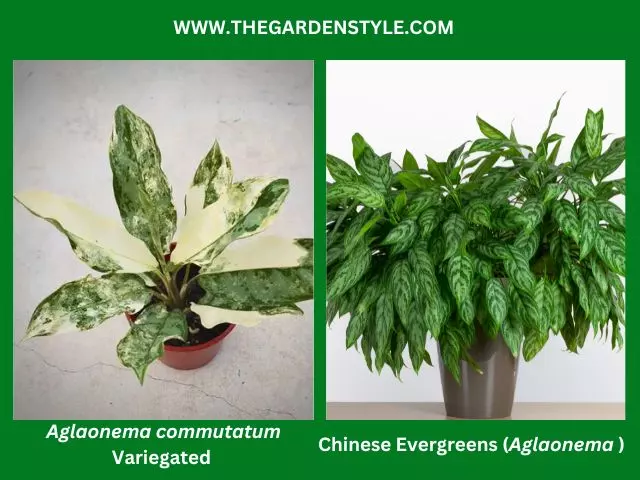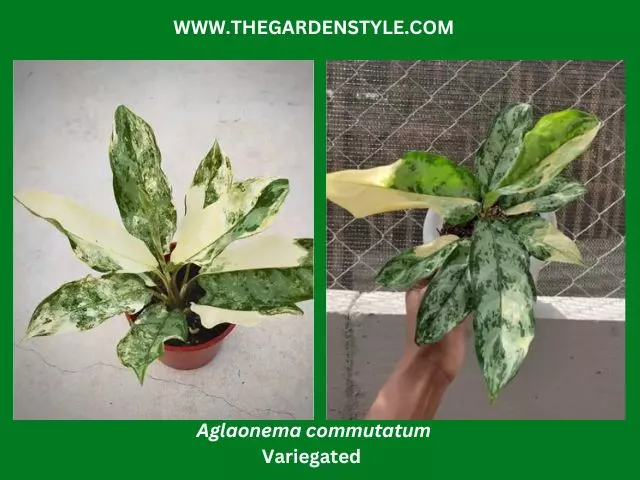If you love indoor plants, you will love Aglaonema commutatum Variegated. A member of the family Araceae, Aglaonema genus, Aglaonema commutatum Variegated originates from the Philippines, Sulawesi (Indonesia), and New Guinea. This plant features lance-shaped green leaves measuring approximately 8” (20 cm) in length and 2” (5 cm) in width, adorned with green and white leaf patterns resembling the eye of a spear.
Aglaonema commutatum Variegated has been introduced into various regions, including Bangladesh, the Chagos Archipelago, Comoros, the Cook Islands, Cuba, India, Puerto Rico, Trinidad and Tobago, and the Venezuelan Antilles. Continue reading to learn all about this beautiful plant that thrives indoors.
Table of Contents
Aglaonema Commutatum Variegated Plant Care
Aglaonema commutatum Variegated plants are relatively slow-growing and typically stay compact, making them suitable for indoor environments with limited space. These plants thrive in bright, indirect light. Avoid exposing them to direct sunlight, as it can scorch their leaves. They can tolerate lower light conditions, but their growth may slow down, and the variegation may become less pronounced.
Use a well-draining potting mix with good aeration. A mix that includes peat moss, perlite, and some organic matter is suitable. Repotting this plant every two years to a larger pot is advisable.
It is essential to keep the soil evenly moist but not soggy. Allow the top inch or so of the soil to dry out before watering. These plants are sensitive to overwatering, which can lead to root rot. Overwatering causes yellow leaves on Aglaonema. Learn more about Chinese evergreen yellow leaves.
Aglaonema commutatum Variegated prefer temperatures between 65°F to 75°F (18°C to 24°C) and moderate humidity levels. Avoid placing them in drafts or near heaters or air conditioners, as extreme temperature fluctuations can harm them.
Feed your Aglaonema commutatum Variegated with a balanced liquid fertilizer diluted to half strength during the growing season (spring and summer) every 4-6 weeks. Reduce or cease fertilization during the dormant winter months.

Pests and Diseases
Aglaonema commutatum Variegated is susceptible to attack by mites and nematodes that destroy its roots, fungi, and bacteria. It is necessary to avoid waterlogging to prevent having them. Check the humidity of the substrate before watering.
Mites and mealybugs that attach themselves to the plant leaves can be removed by rubbing them gently with a cotton swab soaked in alcohol. In the same way, it can remove aphids that usually appear on this plant.
If the substrate is too wet, fungus gnats may appear. These insects do not harm the plant or humans, and removing them should be easy. I recommend you read our article on how to get rid of gnats in plants.
The best way to avoid pests and diseases in Aglaonema commutatum Variegated is to water only when necessary. Avoiding overwatering will prevent the vast majority of pests and diseases that affect this houseplant.

Final Conclusions
Aglaonema commutatum Variegated is an ideal houseplant for any gardener because it is effortless to care for a houseplant. By following the tips in this post, you will be able to care for this beautiful houseplant properly and see how it grows gradually. Remember that the most important thing to avoid pests and diseases is to avoid over-watering. Never expose Aglaonema commutatum Variegated to direct sunlight; its leaves will suffer foliar sunburn.
